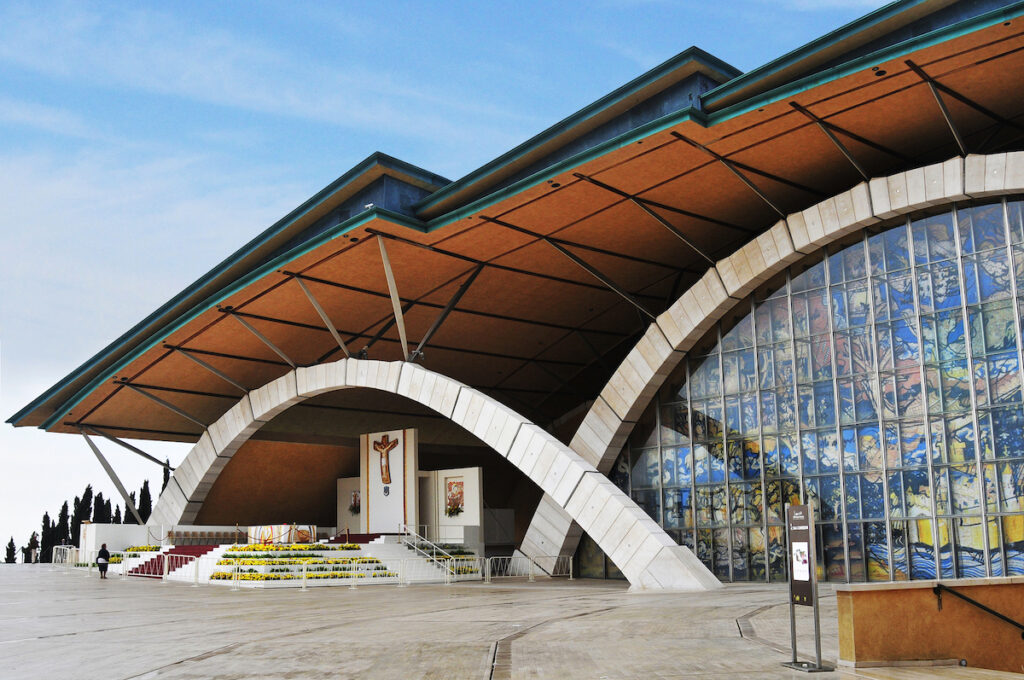Padre Pio Pilgrimage Church in San Giovanni Rotondo, Italy
The leisurely 415 km. drive from Assisi to Padre Pio’s Shrine thru the eastern coast of Italy, heading south to the mountainous region south of Rome, took about 5 hours. We stopped by the seaside city of Pescara for a late sumptuous seafood lunch and arrived at the small town of San Giovanni Rotondo as the sun was setting. It took us quite a while driving around in circles looking for our hotel until we realized that it was just right in front of the walkway leading to the shrine.
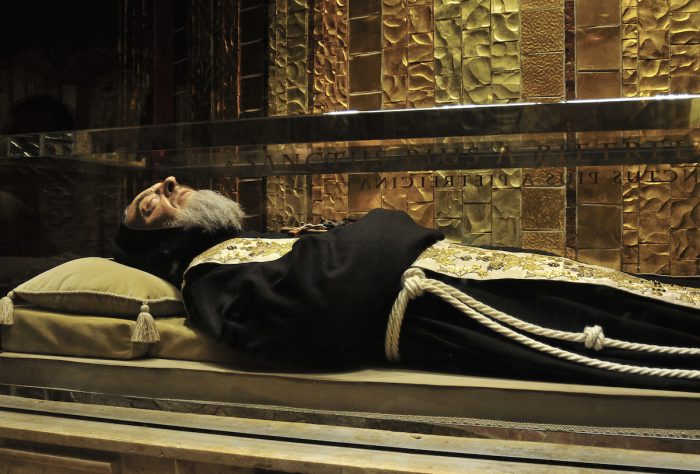
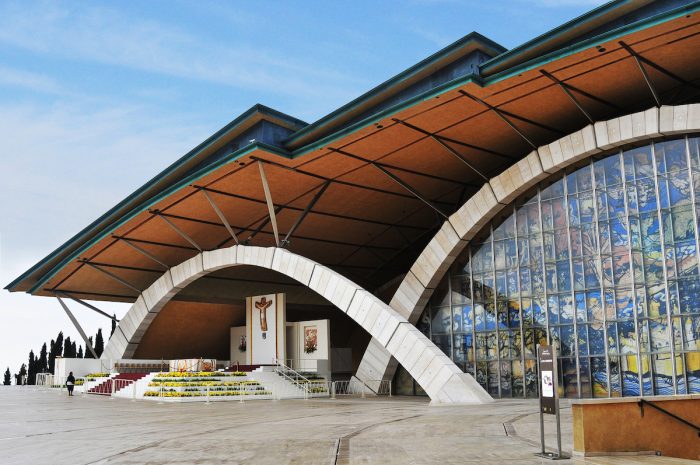
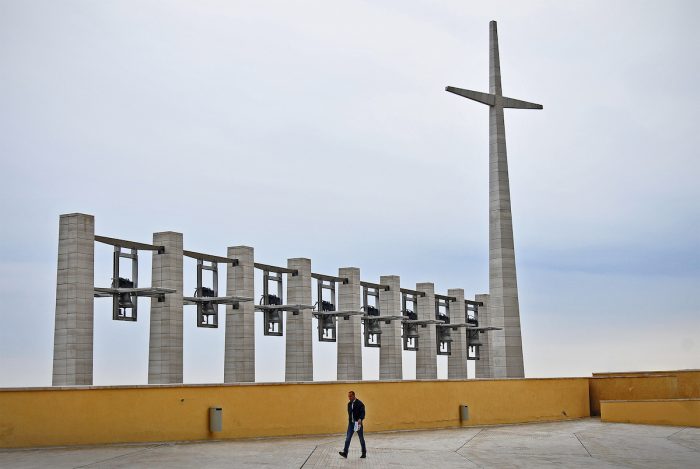
Padre Pio Pietrelcina, the saint, has many devotees in the Philippines, and there is also a dedicated shrine for him in Sto. Tomas, Batangas. He became famous for having stigmata and making miracle cures, and having supernatural abilities such as bilocation (being in two places at once), making him controversial in the Catholic establishment.
When he died, aged 81, in 1968, his fame had spread globally, with millions of people believing his healing powers and his canonization in 2002 further increased his believers many times over. His body was exhumed in 2008, and more than a million people filed past his corpse, which was said to be still in good condition when it was put on display.
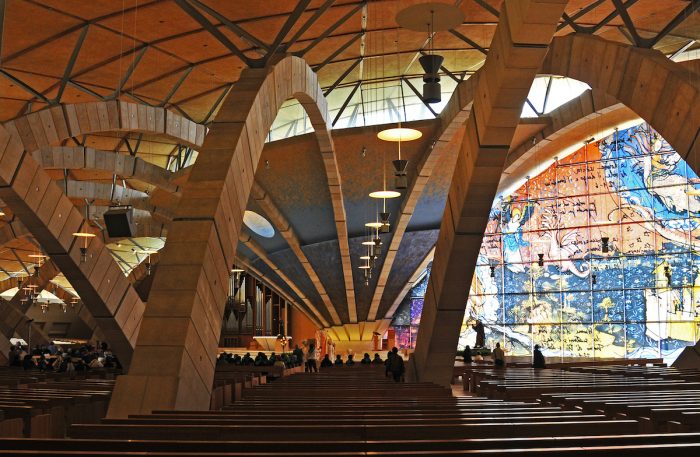
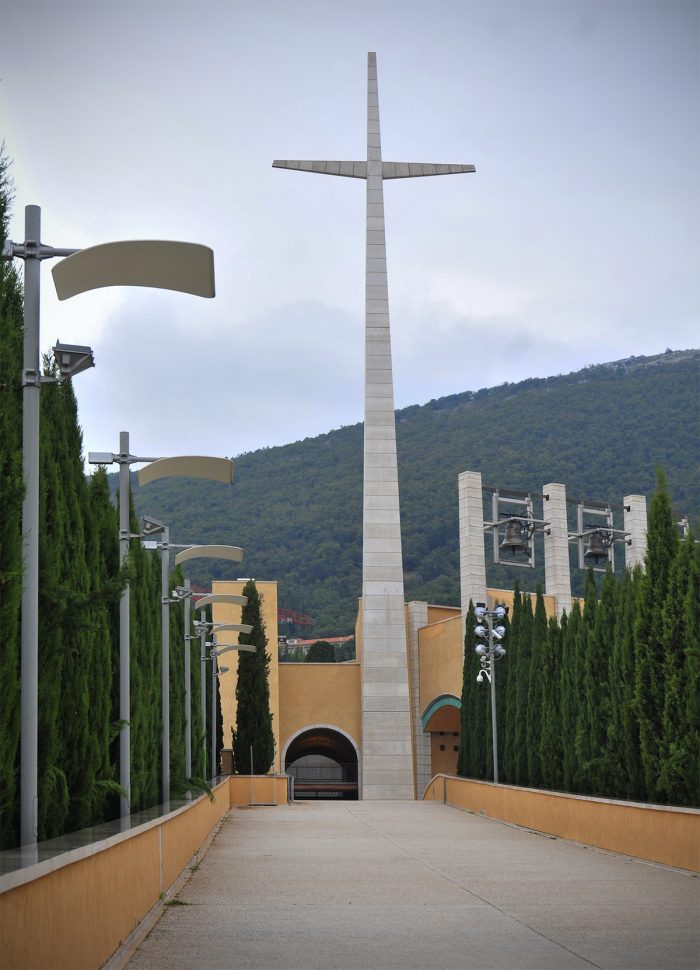
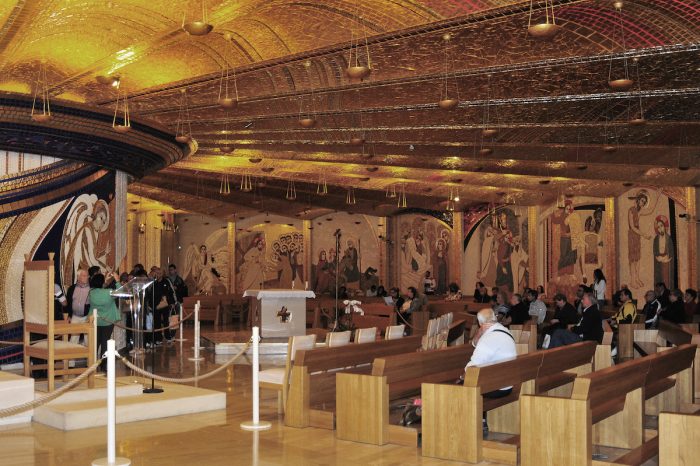
The Church-Shrine was built in 2004 to accommodate the millions of devotees who have made his hometown a major pilgrimage site. Designed by Italy’s most famous architect, Renzo Piano, who also designed the ultra-modern Pompidou Center in Paris, the structure is shaped like a shell with arches radiating from the main altar.
The interiors fuse with the wide piazza outside also built with the same stone. The only barrier between the two spaces are large stained glass windows depicting images from the Apocalypse.
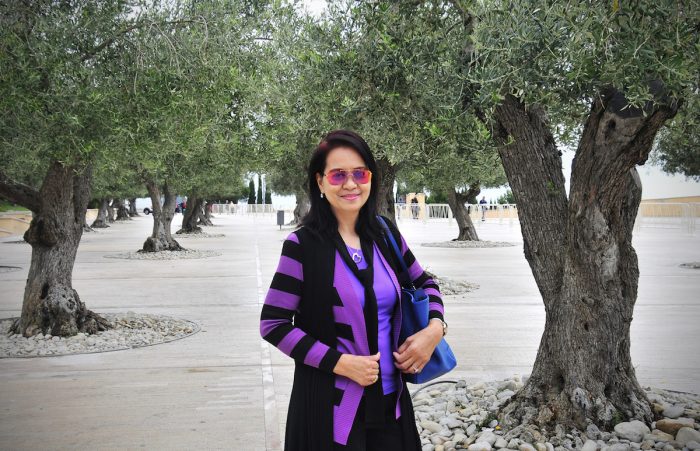
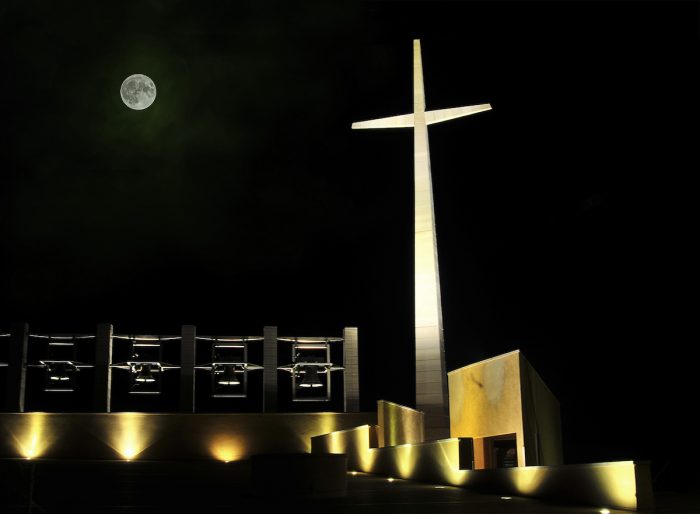
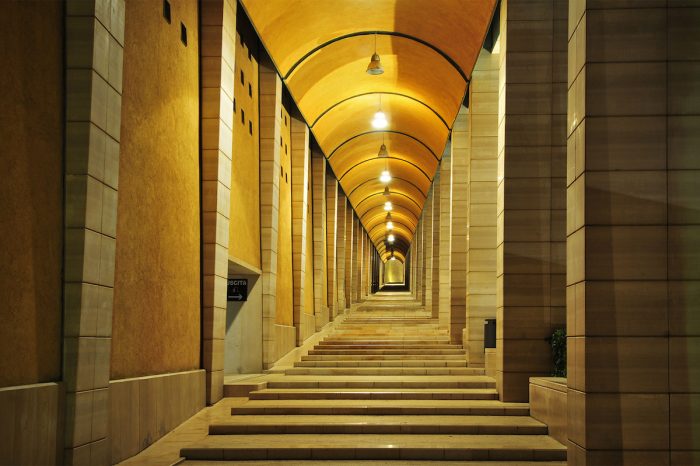
The 6,000 sqm. structure can hold 6,500 seated people and can reach 10,000 if standing only, and as many as 30,000 can fit in the outdoor plaza. Beneath the church is the crypt where the Saint’s body can be viewed.
His face, which has a very peaceful countenance, is coated with a silicone mask, and his skull is covered by his monastic mood. He seems to be sleeping, dressed in his dark brown Capuchin robe.

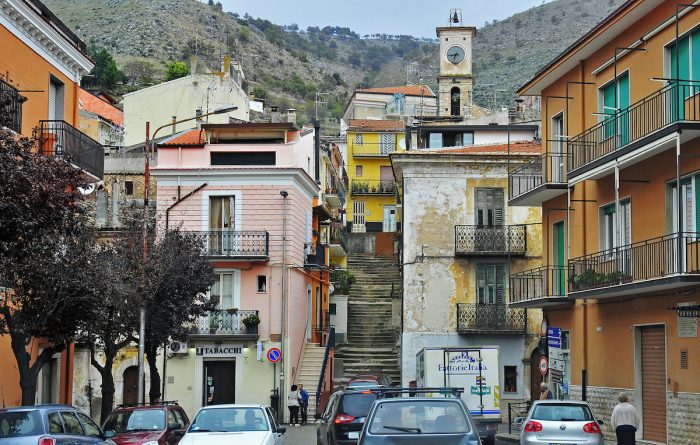
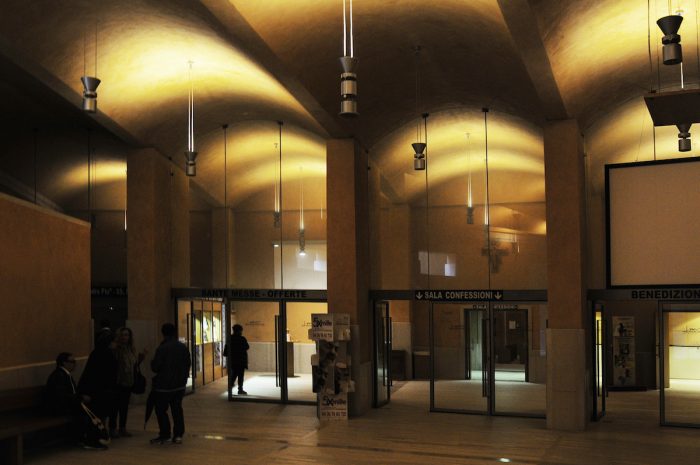
It is nice to walk around the wide exterior space. There is a tall Cross with a bell tower with eight majestic bells, and there are 24 olive trees representing the 12 Prophets and 12 Apostles of Christ. A nearby fountain with running water symbolized the River Jordan.
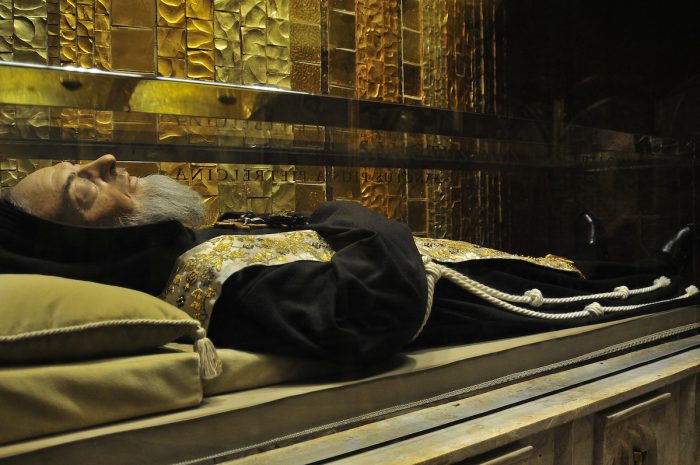
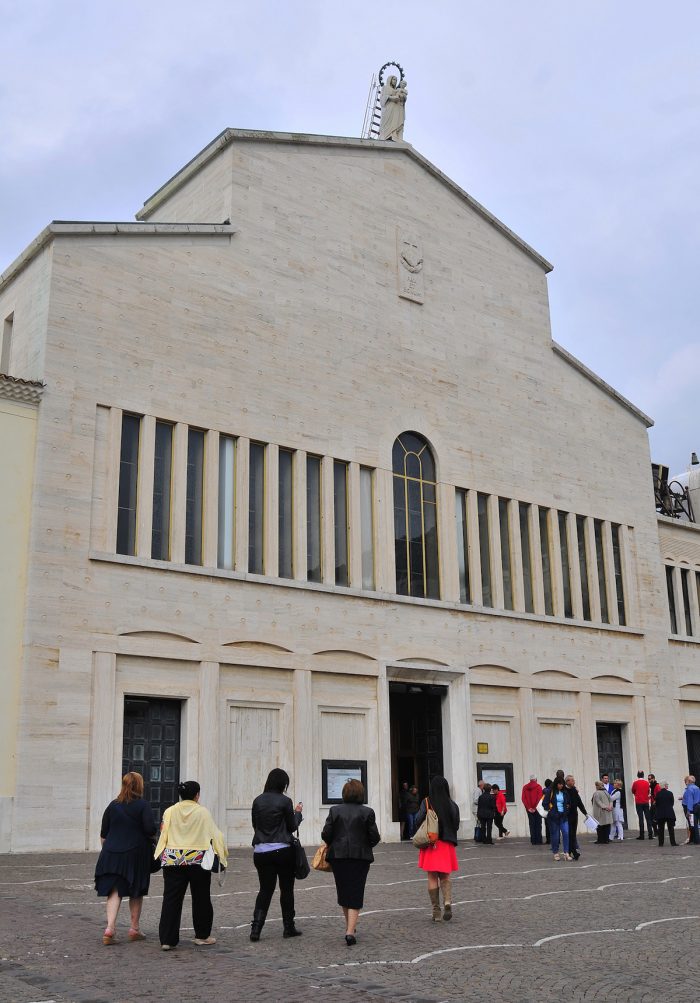
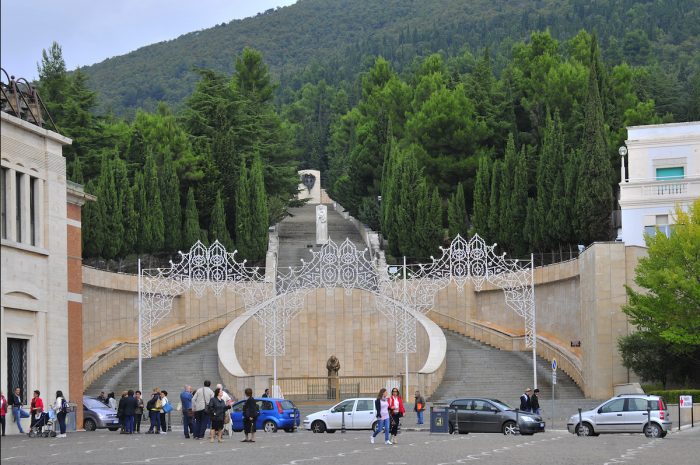
Nearby stood the Santa Maria del Grazie (Our Lady of Grace) church where Padre Pio used to say Mass and receive confessions. He was also initially buried there in a crypt.
There is a Via Crucis in the forested hill behind the church, but we were too tired to climb it, so we just bought some souvenirs and ate another hearty meal nearby. Boy, doing a pilgrimage sure does make you hungry!
Want more updates about other interesting cultural, heritage, and religious destinations in Europe? Follow #TeamOutofTown, on Facebook, Twitter, Instagram, Bloglovin, and Pinterest for more travel ideas.
Also read:
About the Author
Al P. Manlangit is a Filipino architect based in Kuwait who loves to travel and take photos everytime he gets the chance to do so. The genres that he explores are landscape, architecture, and street photography which come in handy wherever he goes. He blogs at designerq8.com, focusing on interesting places he visited with short stories to tell behind each frame.

